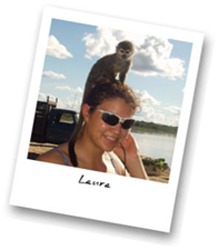Some Music
We sprinted on Saturday. I spent my entire training session on Friday doing laps around the 1.1k sprint loop. I hate doing laps but at so many of our venues there's no option for skiing other than a crowded sprint course so I decided I needed to learn to deal with the crowds and the short loops.
This is what I thought about on Friday. I broke the course down, thought about it, and reassembled it. I asked myself, "if this was a line of music, how would I play it?" This isn't normally how I think about race courses. Music, along with most other skills, is a decided non-talent of mine. The course had a playfulness and a flow to it that made it conducive to my musical analogy. I imagined playing this race course on my oboe. It starts with very simple quarter notes, full of energy because they're the first notes and you've been waiting for ever so long for the oboe solo. The pace picks up briefly to eighth notes around the first broad bend, more interesting certainly, but still legato. Then some slow quarters, but these notes carry more potential. It's only a few bars, but there's the option here for some vibrato. how many pulses can you squeeze into each note? How much extra speed can you add with each kick?
Then it starts getting challenging, up the first rolling hill. Now is time for accelerando. The fingering gets tricky and there's no break in the phrase. You have to use all those little keys running down alongside the oboe. You had better know without thinking where exactly you're going step, how exactly you're going to move. Then there's a breath mark, a short down, a short tuck. Which is good because coming up is a short, steep section. Stacato. Allegro. It's going to be hard and there's no room for error because you only get a few seconds of playing before the next breath mark. Then it's a series of trills around a sharp, fast corner. Played with vivace. Finally it's straight into the finish and there's fewer options for technical mistakes but it gets more and more difficult to maintain the proper tone. And then, a finish, a lunge, and the rest of the orchestra takes back over.
This analogy only momentarily got me distracted with trying to remember all the musical terms that I used to know. Thinking about where the breath marks were along the course was helpful. I told myself to take the opportunity to breath and relax. I also focused more on my tempo on the uphills. It's good to be able to look at a race from more than one perspective.
This is what I thought about on Friday. I broke the course down, thought about it, and reassembled it. I asked myself, "if this was a line of music, how would I play it?" This isn't normally how I think about race courses. Music, along with most other skills, is a decided non-talent of mine. The course had a playfulness and a flow to it that made it conducive to my musical analogy. I imagined playing this race course on my oboe. It starts with very simple quarter notes, full of energy because they're the first notes and you've been waiting for ever so long for the oboe solo. The pace picks up briefly to eighth notes around the first broad bend, more interesting certainly, but still legato. Then some slow quarters, but these notes carry more potential. It's only a few bars, but there's the option here for some vibrato. how many pulses can you squeeze into each note? How much extra speed can you add with each kick?
Then it starts getting challenging, up the first rolling hill. Now is time for accelerando. The fingering gets tricky and there's no break in the phrase. You have to use all those little keys running down alongside the oboe. You had better know without thinking where exactly you're going step, how exactly you're going to move. Then there's a breath mark, a short down, a short tuck. Which is good because coming up is a short, steep section. Stacato. Allegro. It's going to be hard and there's no room for error because you only get a few seconds of playing before the next breath mark. Then it's a series of trills around a sharp, fast corner. Played with vivace. Finally it's straight into the finish and there's fewer options for technical mistakes but it gets more and more difficult to maintain the proper tone. And then, a finish, a lunge, and the rest of the orchestra takes back over.
This analogy only momentarily got me distracted with trying to remember all the musical terms that I used to know. Thinking about where the breath marks were along the course was helpful. I told myself to take the opportunity to breath and relax. I also focused more on my tempo on the uphills. It's good to be able to look at a race from more than one perspective.


4 Comments:
Sweet analogy Laura, and good job with the racing so far!! Good luck in the next ones.
-Maya
Very nifty vignette, Laura. Perhaps the extent of your non-talent is less than you let on.
I never wear headphones out of doors, but I broke my rule and skied to Four Seasons once.
And that's why Ringo Starr is a member of the Rock and Roll Hall of Fame and Cat 1 crit racer.
wait a minute... ringo starr didn't bike race. stosh, I think your point may be that I should stick with what I can do. you're probably right.
Post a Comment
<< Home